Graham Nash on his emotional new album, CSN&Y and his incredible guitar collection
"I have Duane Allman's guitar that he played Layla on"
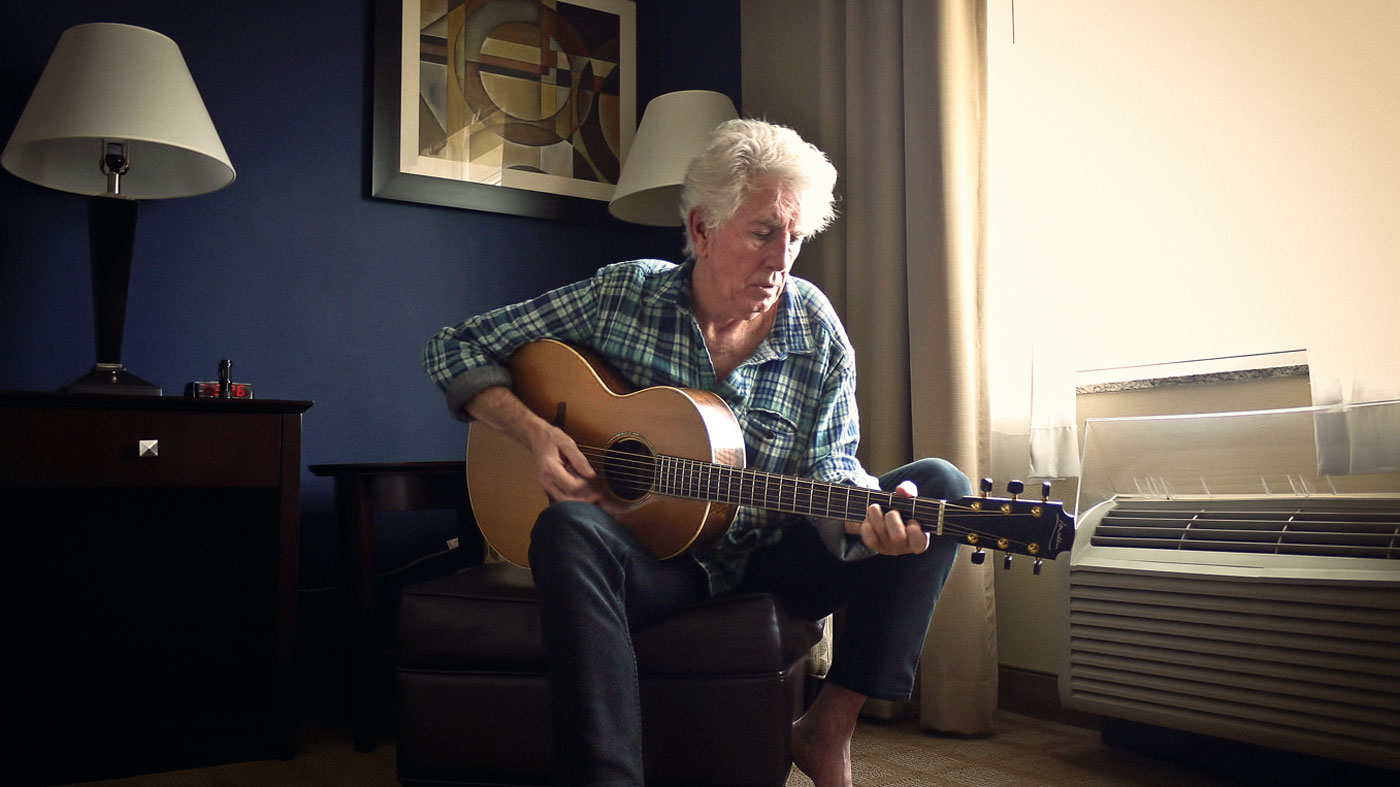
Introduction
When it comes to acoustic-based guitar music, there are few figures who have done more to promote, develop and celebrate the genre than former Hollies man Graham Nash and his partners in harmony, Stephen Stills and David Crosby.
[After CSN] the music world would never be the same again and its shadow still sits heavy over the current landscape
When Crosby, Stills & Nash (CSN) released their eponymous debut album in May 1969, bands such as The Jimi Hendrix Experience, The Who and Led Zeppelin were all the rage, pumping their amps to breaking point and barraging audiences with ferocious volume levels wrought from gargantuan stacks of cabs.
Conversely, CSN delivered beautiful three-part vocal harmonies and lush melodies meandering over the top of exquisite instrumental arrangements. The music world would never be the same again and its shadow still sits heavy over the current landscape. There’s certainly no doubt that this longplayer and its follow-up, Déjà Vu (1970), were a significant influence on the singer-songwriter boom of the early 70s.
With CSN and CSNY (the Crosby, Stills, Nash & Young moniker being adopted once Neil Young joined the line-up later in 1969), Graham Nash played guitar, keyboards, piano and occasional harmonica in addition to sharing vocal responsibilities. The former Hollies man also penned some of the pioneering act’s best-loved songs including Marrakesh Express, Teach Your Children, Our House and Just A Song Before I Go.
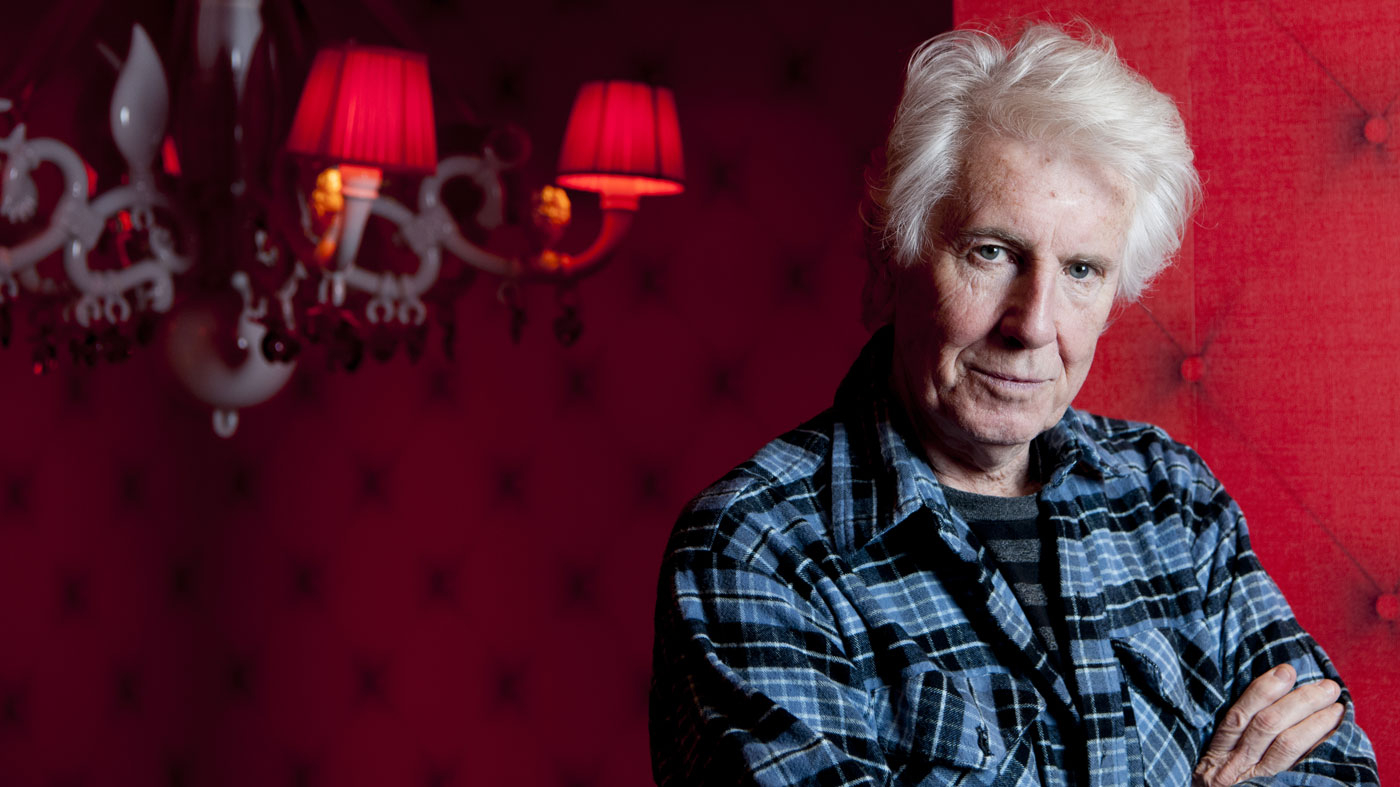
Soloist and sideman
As well as contributing to five CSN and three CSNY albums between 1968 and 1999, Nash has also recorded four studio albums with David Crosby as a duo and six solo albums in his own right; the latest is This Path Tonight, which hit the shops in April. Nash has additionally guested on records by everyone from a-ha to David Gilmour.
I have a tremendous passion for music, I have a tremendous energy and I’m having a great time
At 74 years old, Graham is showing no signs of slowing down in the touring stakes. When we catch up with him on the phone, he’s just a few hours away from taking the stage in Tarrytown, New York on the final night of a US jaunt.
Gigging still gives Nash as much pleasure as it always has and he’s particularly chuffed with the fact that the songs from his forthcoming solo record have been so well received by his audiences.
“I’m doing four or five songs from the new record and they’re going down tremendously,” Graham enthuses. “I’m a musician and a writer, and when I can bring an audience to its feet at the end of a song they’ve never heard, that’s an incredible compliment. I still feel like a child on stage.
“I have a tremendous passion for music, I have a tremendous energy and I’m having a great time. You know, if this short tour I’m doing is any indication, this record is going to be well received.”
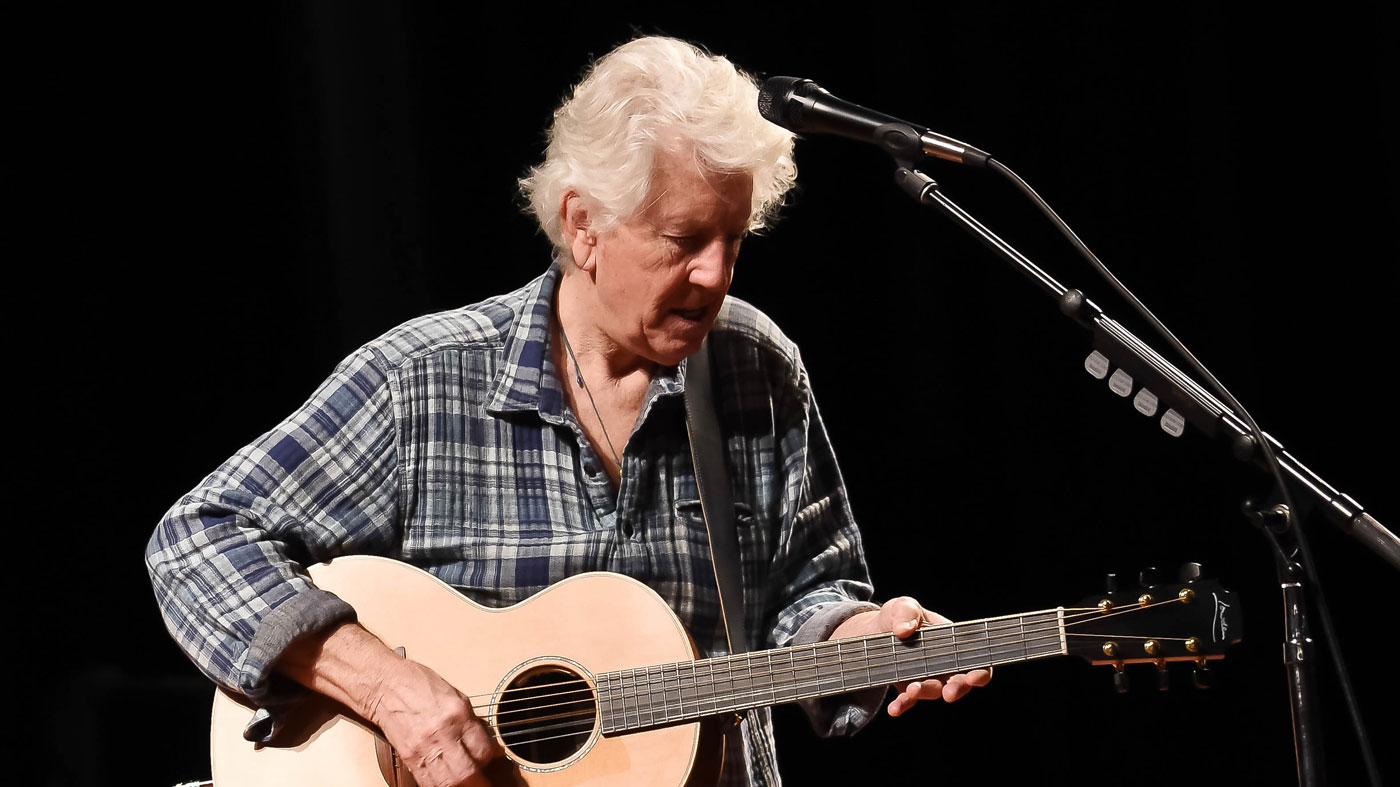
Emotional Journey
This Path Tonight is Graham Nash’s first solo long-player since 2002’s Songs For Survivors.
My divorce forced me to look at my life and what I needed to do for whatever the rest of my life is
Co-written with and produced by guitarist Shane Fontayne (Bruce Springsteen, Sting, Joe Cocker, CSN) with whom Nash has been working for five years already, the album is an incredibly powerful collection of songs.
You can hear and feel the deep-spirited humanity seeping through every lyric and arrangement. For Graham, the writing and recording process has certainly been an emotional journey.
“I’m going through a lot of personal stuff in my life,” he explains. “I’m getting divorced to my wife of almost four decades. It’s all good, but it’s just traumatic and it’s painful. You know, we have kids and it’s just all the normal stuff that people go through with divorce. It forced me to look at my life and what I needed to do for whatever the rest of my life is.
“I mean, quite frankly, I’m 74 years old now and I want to be happy for whatever life I have left. These songs are the emotional changes that I’m going through. The title, This Path Tonight, was carefully chosen because there is an emotional journey through the record.”
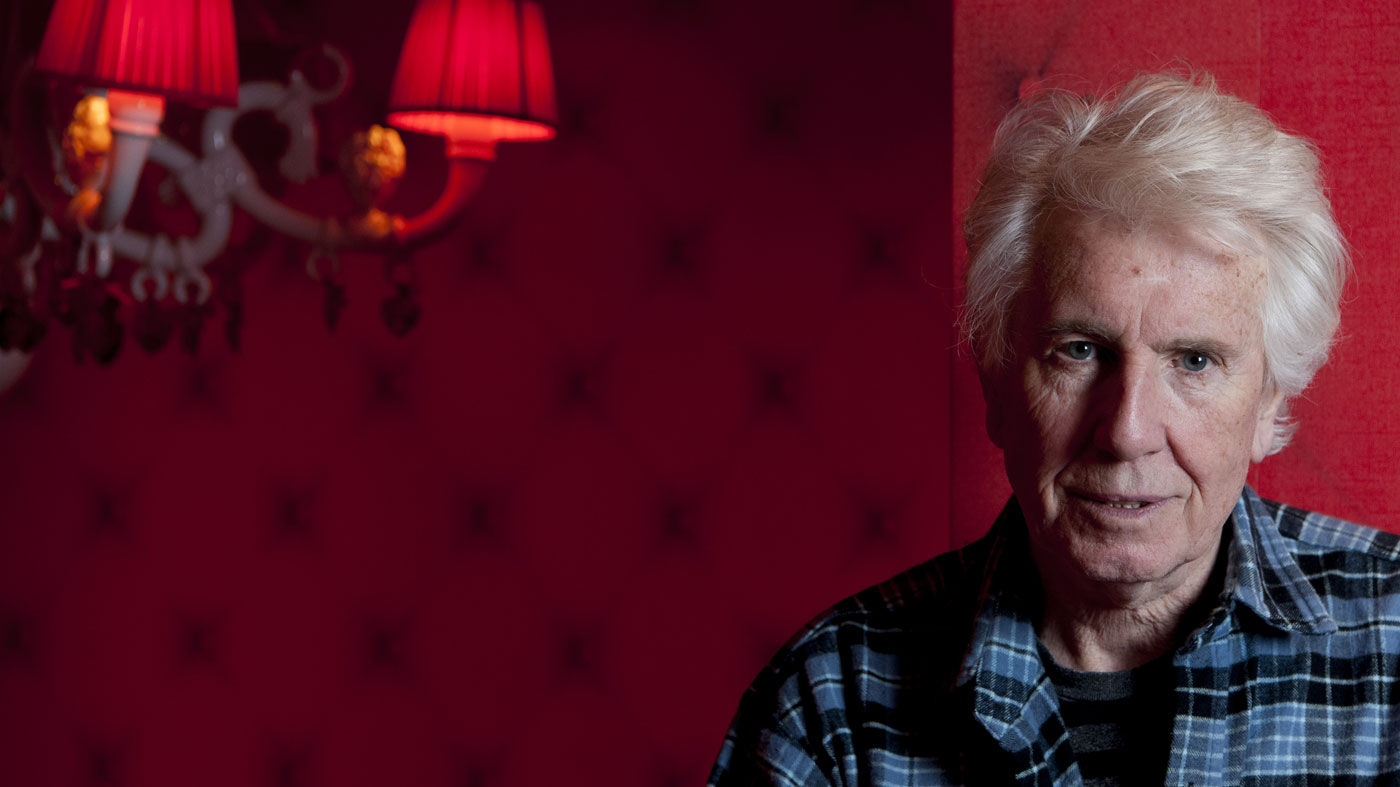
Getting the bus pass
Given the nature of the subject matter, then, it’s surprising to hear that the songs were written in a very collaborative way…
“It was a very interesting way of doing things,” Graham enthuses. “I’m very proud of it and it all happened so fast. [CSN] travel by buses and have done for the last 30 years. Airlines just suck. We each have our own bus, and we share them with the band members, and Shane Fontayne is on my bus.
In the back of a bus after the shows, we wrote 20 songs together and recorded those 20 songs in eight days
“In October [of 2015] in the back of a bus after the shows, we wrote 20 songs together and recorded those 20 songs in eight days. I’ve known Shane for about five or six years. We found him when he was playing with Mark Cohn, a really great American songwriter, who did Walking In Memphis.
“Shane was playing guitar with Mark, and Croz [David Crosby] and I sang with Mark at a show in Los Angeles. We needed a guitar player to go to Europe and Shane learned my and Crosby’s 35 songs in two days! Amazing. I love playing with him.
“So, with the songwriting, what happened, basically, was that Shane knew I was going through incredible emotional changes. I would write at night and I would email him the words, and the next morning, when we got on the bus he’d usually already put those words to music. It happened 20 times in a row. I would say, ‘I feel these words should be going with this kind of music,’ which I’d name and he would go, ‘Oh yeah, I get it.’ It was a great partnership and it still is, too.
“Not only is he a brilliant guitar player, he’s a brilliant musician as well. Quite frankly, they’re all my words and it’s all Shane’s music. It was going to be produced by the two of us, but he did so much work and had such a clear vision of what it was, that I decided that I would just give him the credit.”
Across the album, Nash played Lowden, Gibson and Martin acoustic guitars including his own Graham Nash Martin signature model while Fontayne played “the usual suspects – Telecasters, Les Pauls and Gretsch guitars”.
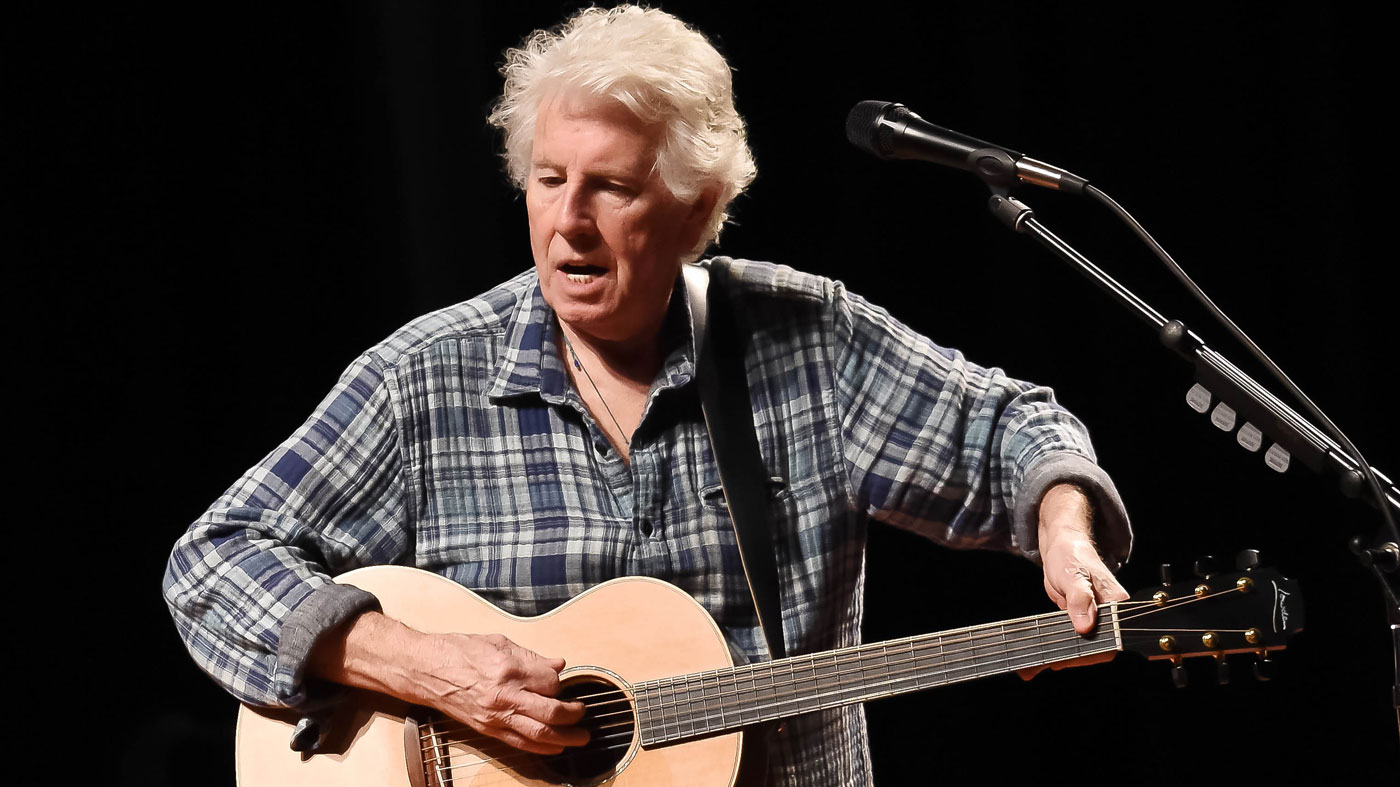
Texan style
When he started playing in the early 1960s, Graham Nash’s early influences were a veritable who’s-who of classic American rock ’n’ roll.
“As a guitarist, Buddy Holly was important because if you could learn three chords, you could probably play a great number of Buddy Holly songs,” says Graham.
My main Hollies guitar was an Epiphone Texan from 1960, which I bought at Barratt’s in Manchester
“And the Everly Brothers were a big influence, of course, in terms of singing. You know, Elvis, Gene Vincent, Eddie Cochran, Jerry Lee Lewis, Fats Domino, Little Richard. Wow, what an incredible set of music to grow up on!”
What was Graham’s main guitar during his six-year tenure in the Hollies between 1962 and 1968?
“I only had a few guitars then, but my main one was an Epiphone Texan from 1960, which I bought at Barratt’s in Manchester,” he explains. “That was the guitar that I sprayed black and I put a couple of pickguards on that reminded me of the Everly Brothers Gibson guitars. It was a cheap acoustic and I could afford it. It was only about 25 quid… but basically The Hollies were only really a three-piece band. They were only drums, bass and Tony Hicks on lead guitar.
“Allan [Clarke] didn’t play and I played but I didn’t plug in, so it was really only three instruments and three voices. But I did write Teach Your Children, Marrakesh Express, Lady Of The Island and all those songs on that Epiphone guitar, but, unfortunately, I can’t find it. It went missing probably about 10 years ago. It might be at Neil [Young]’s place. I’ll have to go check with him.”
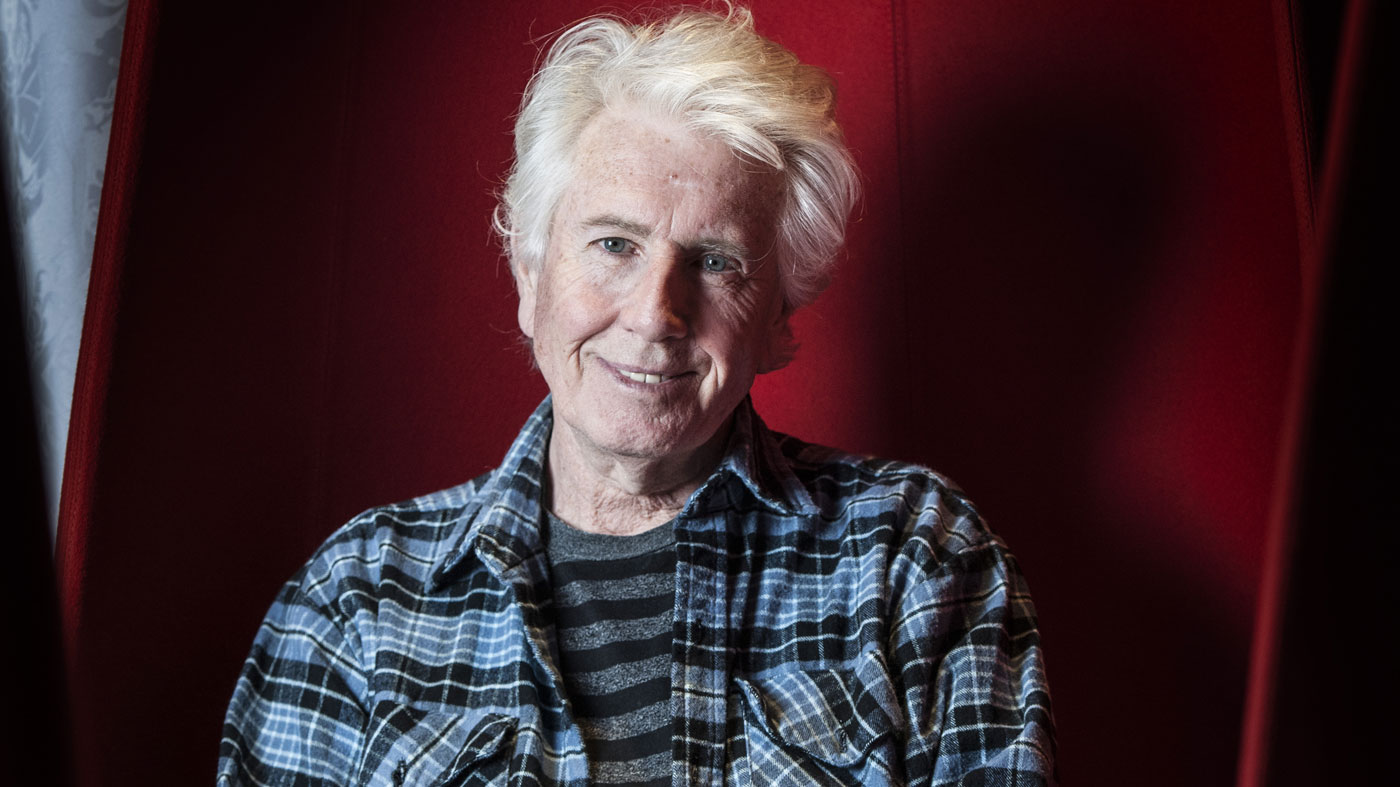
Living in harmony
Nash, who had co-founded The Hollies back in 1962, eventually left the band in 1968 due to what can only be described as “artistic differences.”
Whatever sound we have as Crosby, Stills & Nash was born in a minute
Indeed, the band rejected the future Crosby, Stills & Nash classic Marrakesh Express because they did not deem it commercial enough, while they also turned down Teach Your Children.
Graham still vividly remembers the evening he first found himself singing harmonies with Crosby and Stills at an LA house belonging to the lady with whom he had fallen in love, Joni Mitchell.
“We were in Joni Mitchell’s living room in late ’67 and, quite frankly, my life hasn’t been the same since I heard me and David and Stephen sing together,” recalls Nash. “I went to visit Joni, and David and Stephen were both there for dinner. David asked Stephen to play me this song that they’d been working out a two-part harmony for. It was called You Don’t Have To Cry.
“I asked them to sing it again, and then I asked them to sing it a third time and I sang it with them that third time. It was over. Whatever sound we have as Crosby, Stills & Nash was born in a minute. How could you hear that sound and not realise the potential? That’s when I realised that I had to leave The Hollies and move to LA.”
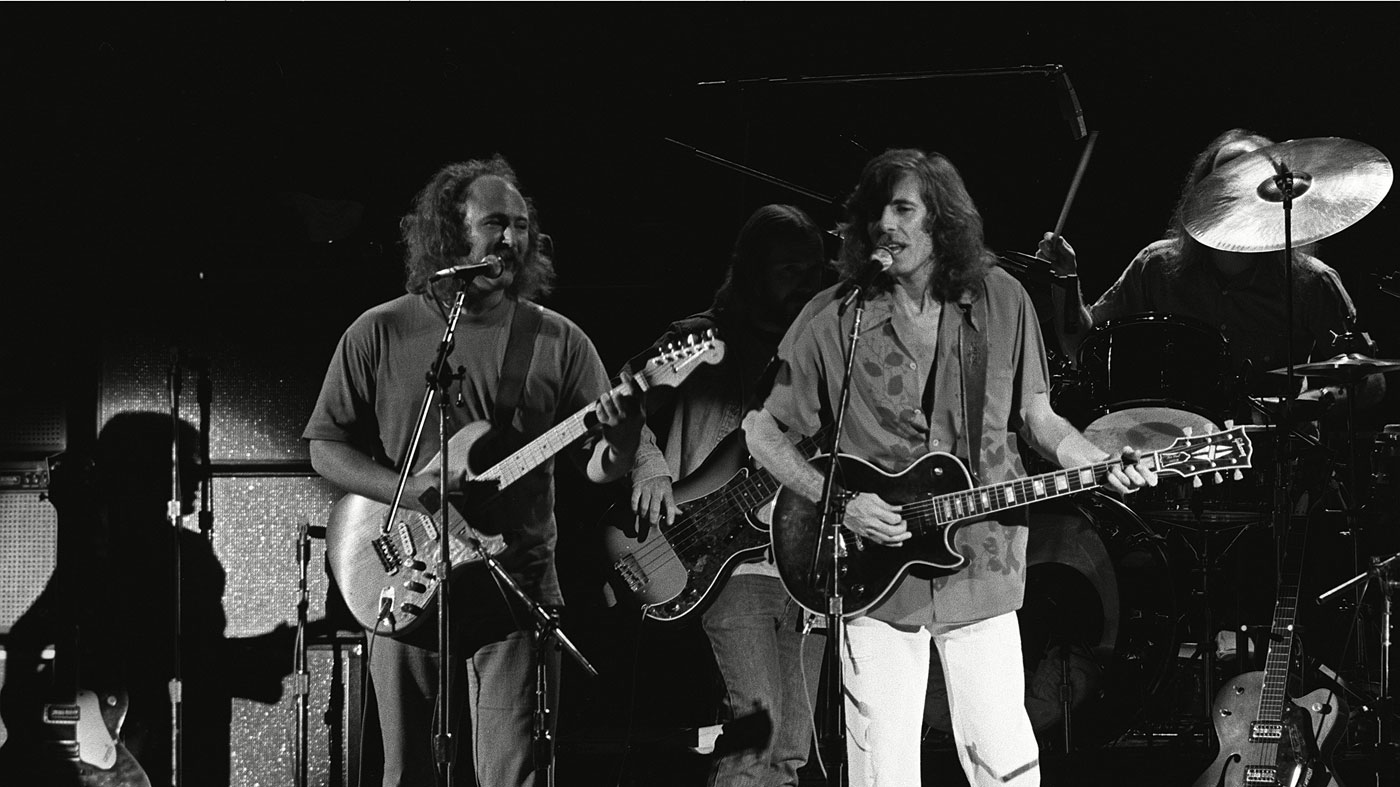
Serious as a heart attack
We ask Nash how he thinks he developed as a guitar player during those early years with CSN, and then later on with CSNY, surrounded as he was by the virtuosic playing of Stills, Young and Crosby. He’s surprisingly modest in response.
There’s no way you can hang out with David, Stephen and Neil and Joni and not have your songwriting affected
“I’m not a good musician,” says Graham. “I mean, I can play enough to write songs but I’m not a good musician at all. I play harmonica and I play piano and I play guitar… but barely.
“You can’t compare anything I do to Stephen Stills. Not at all. Crosby is a great rhythm guitar player and a unique musician. I don’t know anybody who plays music like him. Neil Young is a masterful musician and serious as a heart attack about his music, and you better bring your best stuff forward when you’re playing with Neil because that’s who he is.
“However, there’s no way you can hang out with David, Stephen and Neil and Joni and not have your songwriting affected, of course. You see what they’re doing, you see how they’re doing it and you see what they’re talking about. I get influenced by everything that happens in my life.”
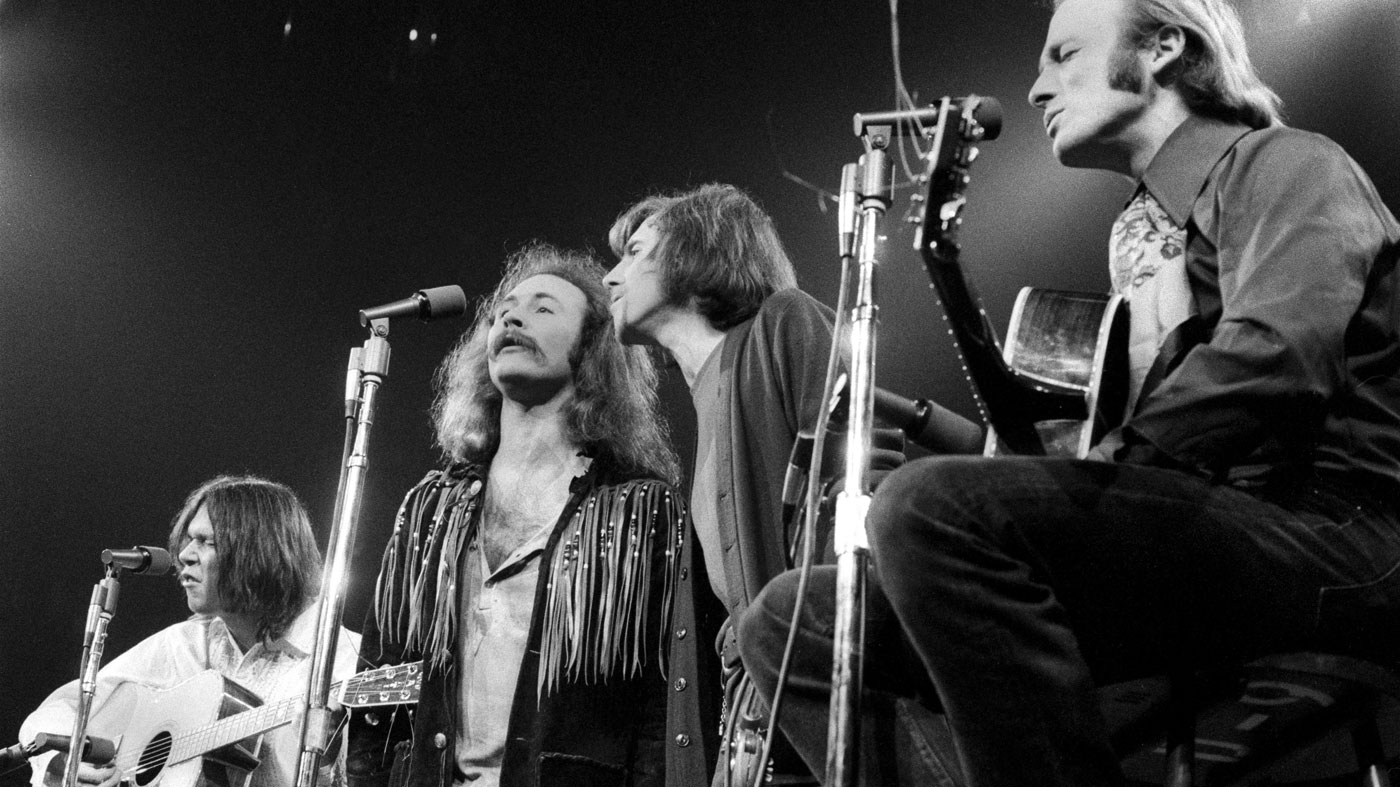
Battlegrounds
Musically, CSNY live shows were renowned for the epic electric guitar battles between Stephen Stills and Neil Young. Standing on stage, Graham Nash was often just as blown away as the many wowed minds in the band’s audiences.
It was incredible to stand in between these two stags with guitars – ‘Oh yeah? Take this!’
“They were some of the best musical moments of my life,” explains Nash. “It was incredible to stand in between these two stags with guitars – ‘Oh yeah? Take this!’, ‘Oh yeah? Well, I can play better than that!’, ‘Oh yeah? Well, take this!’ It was amazing. Many, many nights, I’ve stood in the middle of those two on stage conversing together with their guitars and it’s been magical.”
During Nash’s 50-plus-year career, he has written, recorded and performed with one musician more than any other: David Crosby. Our interview took place prior to the pair’s well publicised rift earlier this year, where Nash was quoted as saying, “In my world, there will never, ever be a Crosby, Stills, Nash and Young record and there will never be another Crosby, Stills and Nash record or show.”
So, when we had asked what the secret between he and Crosby’s long-lasting musical relationship was, his answer was perhaps more telling about the vulnerability of their relationship than we could’ve realised…
“I have no idea why the relationship between me and Crosby works,” he replied. “We come from very different places, we were brought up both very differently, we love different basic forms of music, and on paper, it shouldn’t work at all – but it does!”
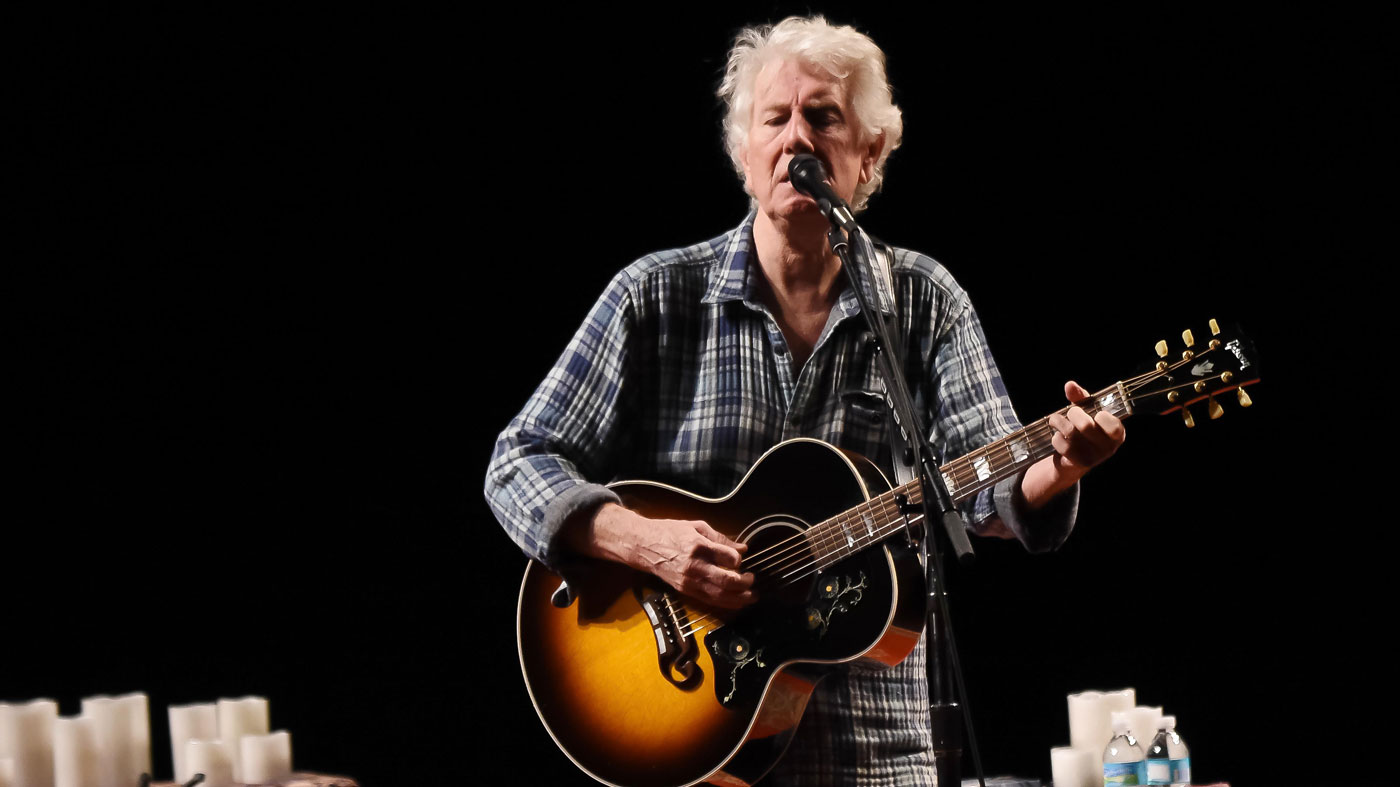
Greatest Collection
Before we let Graham go so that he can get himself prepped for that evening’s gig in Tarrytown, New York, we just have to ask him about his incredible guitar collection. After all, is there any collection of instruments more interesting and historic than Nash’s, anywhere around the globe? It’s rather doubtful…
When you’re playing a guitar like Johnny Cash’s or Duane’s Les Paul, it’s a special thing
“I have a friend called Fred Walecki and Fred and his family have had a music store in Los Angeles probably for the last 60 or 70 years,” Nash explains.
“And Fred knows about my interest in buying interesting guitars that helped change music and, through that, I do have an interesting collection of guitars. I have Johnny Cash’s first major guitar, which he signed on the back with a nail. I have Duane Allman’s guitar that he played Layla on.
“I have Stephen [Stills]’s Firebird from the ’74 tour and I have his [Gretsch] 6120 from the [Buffalo] Springfield. I have Phil Everly’s acoustic Gibson from 1960. I probably have about 60. And, yeah, I do play them. I love to get as close to the flame as possible. When you’re playing a guitar like Johnny Cash’s or Duane’s Les Paul, it’s a special thing. You get closer to the heart of the music.”
Finally, is there one dream guitar that Graham would love to add to his collection?
“I don’t have many photographs of me up in my house except for one,” he says. “It’s of me playing Buddy Holly’s guitar with the leather cover on it. It’s the acoustic guitar he wrote Peggy Sue on and I have a photograph of me playing that guitar. It actually belongs to a friend of mine, but I wish I owned it. Playing that was beautiful. A thrill.”
Graham Nash’s latest solo album, This Path Tonight, is available now on his Blue Castle label

